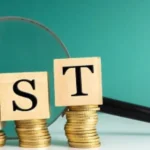Jaishankar China Visit Galwan Turning Point
External Affairs Minister S. Jaishankar China visit Galwan turning point for the first time since the 2020 Galwan clash. This diplomatic move, amid the SCO Foreign Ministers’ meeting, could be a key moment in mending strained ties between India and China.
India-China Relations on the Mend?
Source Image: moneycontro
Read More: Trump Reacts to Bongino-Bondi Rift Amid Epstein Fallout
What the Visit Signifies
Jaishankar’s presence in China marks the highest-level Indian diplomatic visit to the country since tensions erupted at the LAC in June 2020. The visit sends a strong message of strategic recalibration. It follows Defence Minister Rajnath Singh’s visit last month and signals India’s intention to maintain stable dialogue with Beijing.
Signs of Thaw Since Galwan
-
Troop Disengagement Progress: By late 2024, India and China completed troop withdrawals from key standoff points like Pangong Tso, Gogra, and Hot Springs.
-
Direct Flights & Pilgrimage Resumed: India resumed the Kailash Mansarovar Yatra and direct air connectivity with China in early 2025.
-
Kazan Meet Outcomes: The October 2024 SCO summit in Kazan laid the foundation for resuming structured dialogue and mutual de-escalation.
Diplomatic Goals of the Visit
Scheduled High-Level Talks
Jaishankar is holding discussions with Chinese Vice President Han Zheng and Foreign Minister Wang Yi. Topics likely include:
-
Border disengagement
-
Regional stability in South Asia
-
SCO cooperation and BRICS expansion
-
Trade relations and investment clarity
Key Issues That Remain
-
LAC Not Fully Resolved: Although disengagement occurred at several points, Depsang and Demchok remain contentious.
-
China-Pakistan Nexus: India remains cautious about China’s growing ties with Pakistan and projects near sensitive areas like POK.
-
Trust Deficit: Despite dialogue, public sentiment in both countries remains wary due to past clashes.
Why This Visit Could Be a Turning Point
1. Diplomatic Channels Reopened
The revival of Special Representative talks and border dialogue mechanisms reflects intent on both sides to address disagreements methodically.
2. Strategic Stability in the Region
With rising global tensions, both India and China have a shared interest in keeping their border stable while focusing on economic resilience and regional leadership.
3. Economic Realignments
China seeks investment confidence amid global supply chain shifts. India, meanwhile, wants security at the frontier and reduced dependency.
Final Takeaway
Jaishankar’s visit to China is more than symbolic. It offers a chance to stabilize one of Asia’s most critical bilateral relationships. While challenges like border disputes and mutual suspicion still exist, this step could lay the groundwork for gradual normalization, strategic balance, and regional cooperation.















